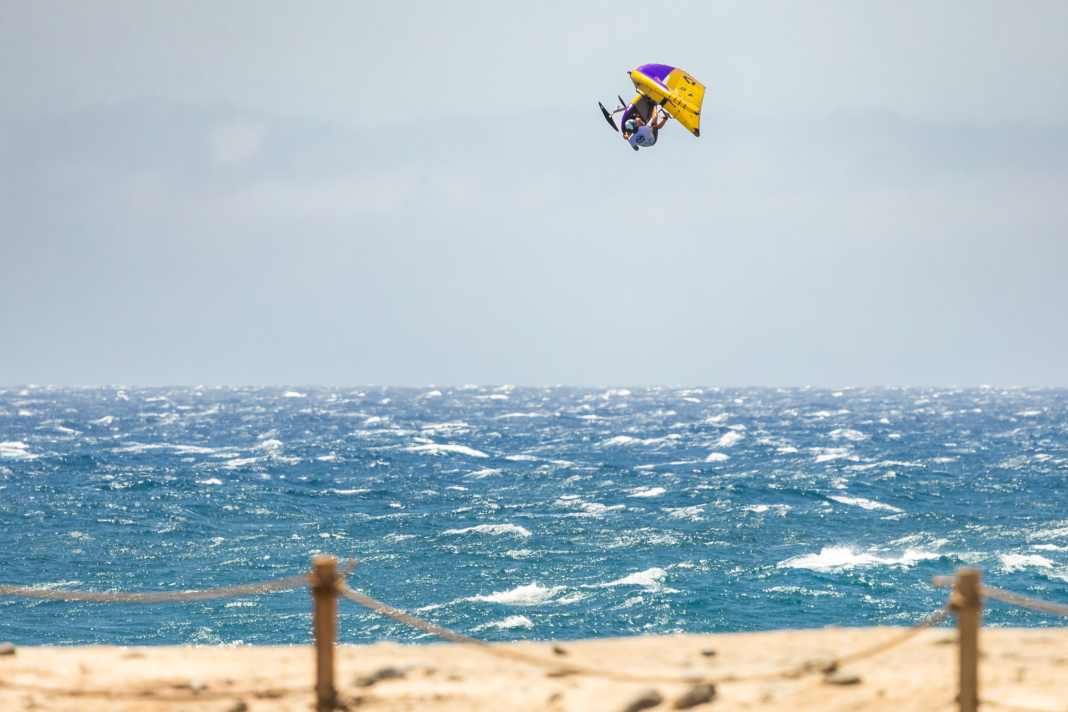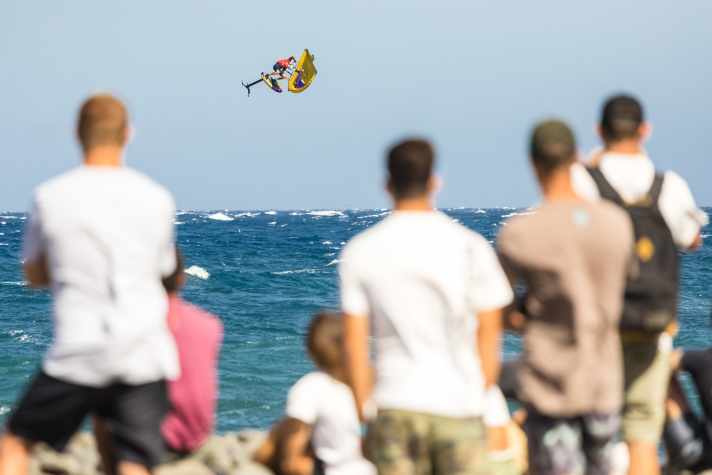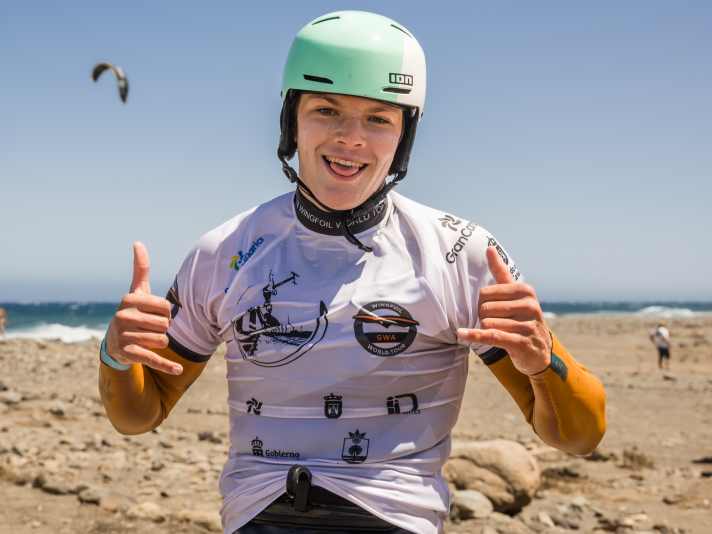





Munich-born professional wingfoiler Benjamin May is one of the best riders in the world in the Big Air discipline. In 2023, he was runner-up at the Big Air World Cup in Pozo. Here he explains what makes this discipline so fascinating and what tricks every wingfoiler can use to increase their own jump height:
Benjamin, many wingfoilers want to jump. And then it can be even higher. But at what height is a jump a "big air"?
To be honest, it's difficult to say. In my opinion, a jump counts as big air if it is above your own standard height. In other words, if you jump two metres high on average, but then do a six-metre jump, that's definitely big air. In competitions, jumps from ten metres upwards are scored well. Depending on whether it's a straight air or an inverted trick. But in principle, the definition is completely free. High jumps always look spectacular.
You also became a wingfoiler to jump as high as possible, didn't you?
Yes, wingfoiling gives me a good adrenaline rush. And, yes, you have to realise that I'm a wingfoiler because I don't have many opportunities or space at home in Otterfing, a small village south of Munich, to launch a kite, for example. So wingfoiling is perfect for me at home. That way I can spend enough time in the air.
In 2023, you were runner-up in the Big Air World Championships in Pozo, Gran Canaria, and in 2024 you also achieved an excellent fourth place. What does it mean to not only jump high, but even higher?
A lot of wind is a basic prerequisite for jumping as high as possible. A steep, powerful wave also helps. It is usually even better if it comes slightly from the side and does not roll towards you from the front. This extends the distance for the run-up and makes it easier to control.

How high did the top athletes jump?
My highest jump during the competition was just under 11.5 metres with a delayed front flip. Malo (Guénolé, the editors) jumped a little higher and had a few jumps of 12.5 metres. On average, the height of the jumps for the best riders was between ten and 13 metres.
Does the old basic rule "the more wind, the higher" apply to big air contests?
Basically yes, 35 knots is better than 30 and 45 knots is better than 40, but at a certain point there is too much wind involved. At 65 knots of wind, I don't fly any higher. Theoretically, you could fly even higher, but as the wind increases, it becomes more and more difficult to control the wings at all. That's why, at wind speeds of 50 knots or more, you start using the smallest 2.5 wing. But it has so little surface area that it no longer supports my 80kg body weight properly. A larger wing then hardly makes any sense, as it then becomes almost impossible to go straight ahead at all.
How much wind did you have at the Big Air World Cup in Pozo?
In 2024 it wasn't that much, about 28 knots. I used wings with 4.0 or 4.5 square metres. The year before, there were gusts of up to 50 knots, so it went higher. For the Big Air discipline, I always use wings that are about one to 1.5 square metres bigger than I would normally use.
How do you even keep that up on the water? Driving a 4.5 wing at 28 knots must be a real pain in the arse...
I always ride a harness with my wings powered up like this, because otherwise my hands would get tired at some point. Riding in a harness, on the other hand, I can shake out my arms from time to time and give my muscles a "little break", so to speak. That's good for me, even if most wingfoilers aren't so convinced by harnesses. But it's great for big air!
Do you necessarily need waves for high jumps?
Not necessarily. Of course, a kicker can help, but ideally the wave even approaches from windward. When the wave comes at you head-on, the landings are very hard. Pozo is the best place I know for big air. Apart from that, I also like travelling on the North Sea and the fjord in the north of Denmark, because I can fly high up there in storms. But other aspects are also important when choosing a spot: What happens after a fall? Where do I drift to? In Denmark, I prefer to go to the fjords to train big air in really stormy conditions. These are great conditions and I can't drift out to sea if something goes wrong.
High jumps always look spectacular
What riding technique tips do you have for surf readers to jump higher?
The speed you can build up towards the jump is very important. The greater the speed, the higher you will be able to jump. A foil with less surface area is therefore an advantage. But you don't just have to have a lot of speed and jump on a half-wind course. Shortly before the jump, you go on a light space wind course and then luff up about 10-15 degrees. These are only short moments, so maybe three to four metres at a time.

Then comes the take-off!
When taking off, it is important to shift the centre of gravity to the back foot. This generates more pop. It is then advisable to get into as compact a position as possible in order to survive turbulence and gusts. This means: pull your legs up to your upper body and stretch the board slightly to leeward. This keeps you compact and prevents you from swinging like a Raley. Otherwise, from a height of five or six metres, the impacts can become very hard, which not only affects the material, but also your own body.
And when you're in the air?!
When you are in the air, the process is similar to a normal jump. But there is one crucial difference. With a really high jump, it's important not to do a raley, so the board shouldn't be upwind of your body, because then the landings will be hard.
What does a successful landing look like?
Ideally, you should be slightly behind. Similar to windsurfing, the impact is lowest when the board does not land flat on the water but dips at a slight angle.
What can go wrong with these high jumps?
If you take it slowly, nothing usually happens. But it's a natural sport and you can't control all the factors. This includes reading the wind pattern on the surface of the water before you jump. This is because gusty winds can create air pockets, similar to turbulence in an aeroplane. Then it can happen that you simply fall off! Unfortunately, I have already torn a ligament in my foot. However, this is really the exception and only happens if you fall unfavourably. Otherwise, of course, there is always a residual risk.

